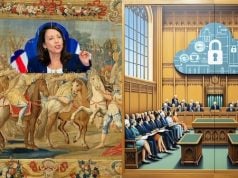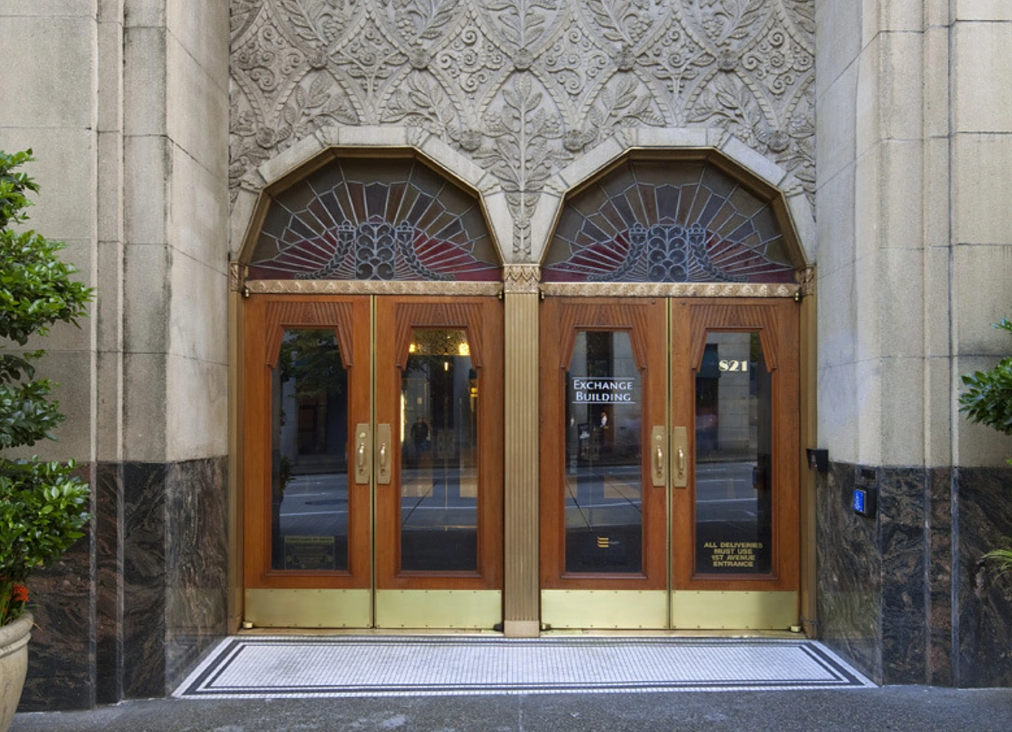
Marion Street in midtown Seattle sits at a crossroads between time and terrain, the city’s pioneering past and its panoramic future. Its ascent is one of the steepest in a city of hills, starting at the Colman Ferry Dock on the waterfront.
The street slopes upward from the ferry terminal to the art deco-appointed Exchange Building, designed in 1930. This concrete temple was Seattle’s first financial “district,” the home of the original Seattle Stock Exchange, occupying an entire city block between First and Second Avenues. Savvy foot travelers know how to take refuge from winter’s rainy weather by entering the building on First and taking the elevators up to the street exit on Second, a time-and-step-saver.
The super-structure demarcates new era Seattle from old. To the South sits Pioneer Square, the home of yesteryear’s gold rush-era mercenaries and today’s bitcoin-era entrepreneurs. To the North, the postmodern, intergalactic, geomorphic Seattle Central Library is poised along the way to Pike Place, Westlake, Belltown and South Lake Union.
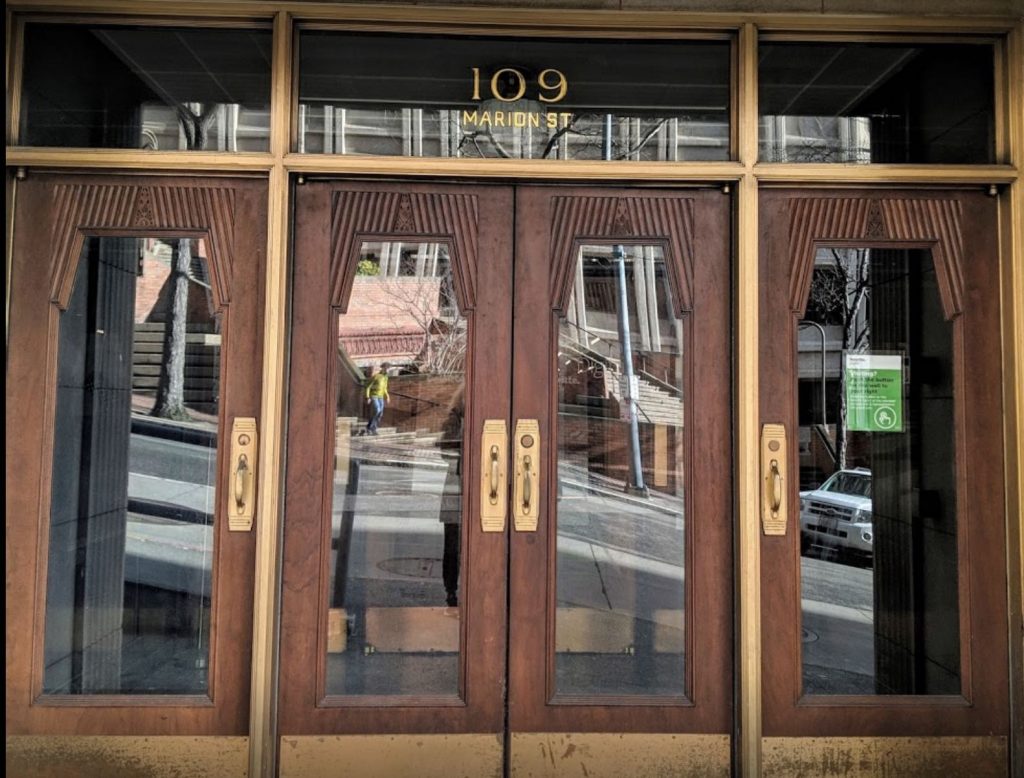
Stepping across the transom of 109 Marion Street, a similar confluence of creative craftsmanship and strategic market futurism is in play. Inside the workspace of Seattle’s Deloitte Digital, a kind of digital renaissance is uniting the two ends of the digital creative-marketing continuum.
Enter on the ground floor and you find yourself looking up, standing inside a canyon-like, office atrium. Like the mission control center at NASA, the open floor plan includes rows of workstations with wide-screen computer displays, Herman Miller chairs, and modular taborets.
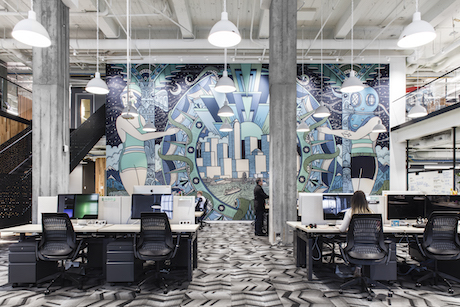
On the front wall is a towering, two-story mural in blue and green hues that depicts Seattle’s modern skyline and its storied past, featuring iconic Northwest symbols, Native American totems, a deep-sea diver and nautical creatures from beneath the surface of Puget Sound. The mural, created by artist Kyler Martz, epitomizes the dual concepts that are being fused in this digital laboratory — creativity and innovation.
What’s the difference between creativity and innovation? The former refers to conceiving a fresh idea, a novel solution, whereas the latter implies initiating something new in the marketplace, often the first sprouting of the fertile idea. Creativity is fueled by ‘imagination’ while innovation is achieved through ‘implementation.’
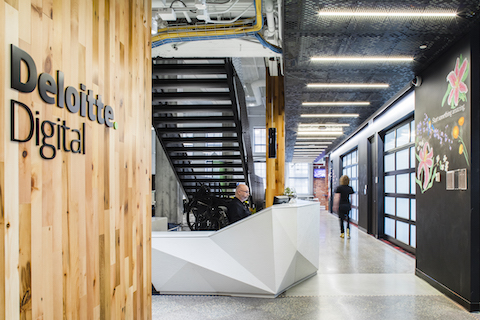
Call it inspiration combined with execution. Deloitte’s vision as a multi-disciplinary organization is to allow creativity and innovation to flourish through a process called Creative Digital Consulting.
The zeitgeist of this cooperative approach has given rise to impressive gains for Deloitte Digital clients. By packaging the power of the firm’s corporate consulting prowess with a host of digital enabling technologies, the practice is connecting clients to a different kind of strategic experience deploying agile delivery methods, and innovative thinking to help clients build, enable, and scale digital abilities, culture, and talent.
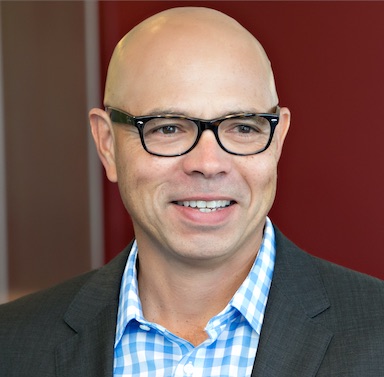
Pat Ogawa is the Managing Director of the Deloitte Digital practice in Seattle having joined the firm in 2012 from Nordstrom where he was the leader of the Nordstrom Innovation Lab and Customer Experience Center as well as Nordstrom’s omni-channel transformation including the Nordstrom Mobile Strategy. His background also includes leading the customer experience transformation for a major health and wellness provider as well as directing the “future of retail” transformation for an automotive leader. Ogawa’s client portfolio includes CarMax, Macys, Nike, Target, Toyota and Amazon.
In 2016, Deloitte acquired the HEAT agency which operates within Deloitte Digital as a full-service advertising agency, working across traditional, digital, and social media. Combining HEAT’s delivery of authentic engagements between consumers and the brands they love with Deloitte Digital’s deep industry knowledge and experience with business transformation and organizational change has resulted in a model that guides chief marketing officers to reimagine their customers’ experience comprehensively and answers businesses’ needs for a holistic connection between their brands and the consumer.
We asked Pat to walk us through the art, science and practice of creative digital consulting for the Fortune 1000.
Seattle24x7: In 2016, Deloitte combined forces with HEAT and launched its Creative Digital Consulting service model. What has been the outcome of that catalytic reaction?
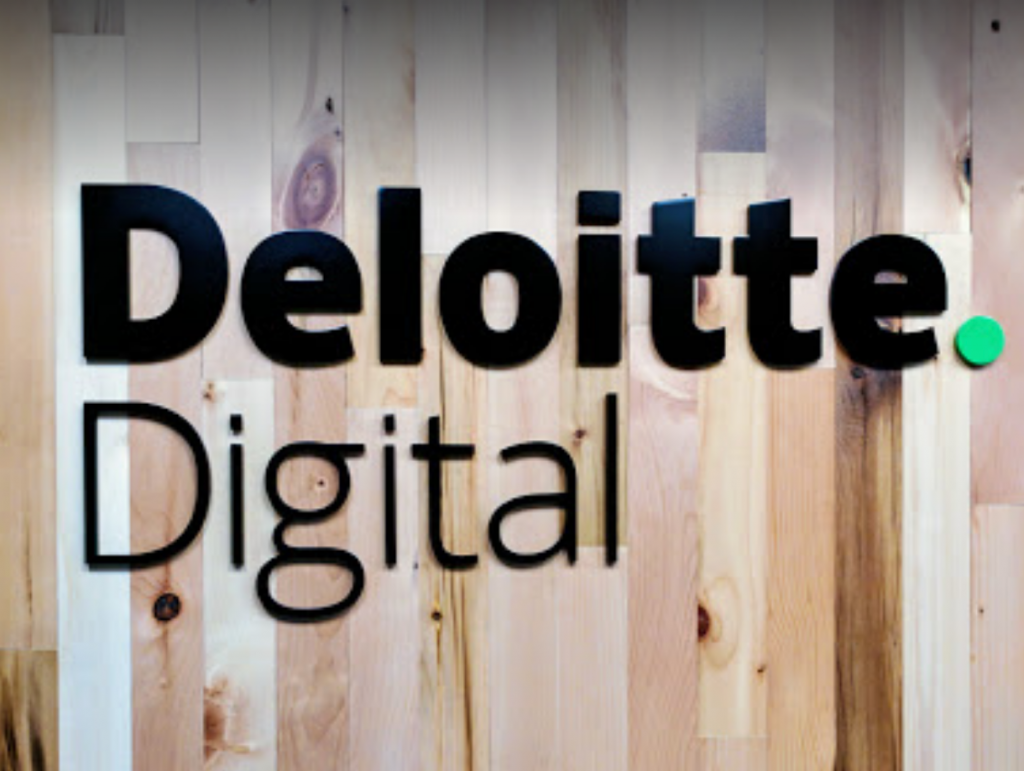
Ogawa: The addition of HEAT to Deloitte Digital resulted in the world’s first creative digital consultancy, a model which transforms the way C-suites approach business in the digital age and allows for greater ownership of, and return on, end-to-end customer experience.
Seattle24x7: Do the two companies operate independently in serving clients? Or do CDC projects integrate seamlessly under one provider brand?
Ogawa: HEAT and Deloitte Digital operate together as a one-stop-shop. We bring together creative, business strategy and digital transformation all from the same team as we work together to capture the imagination of consumers well into the future.
Seattle24x7: What types of projects fall into the creative digital consulting service category?
Ogawa: Deloitte Digital provides a variety of services to help clients close the gap between what we would call possibility and delivery. The mission is to help, design and generate new products and services that build new experiences for customers. This can involve new and emerging media such as augmented, mixed, virtual reality, 360° video, and immersive. It also means improving operations, building new assets, and enabling better outcomes through a combination of human insight and machine learning.
Seattle24x7: How does creative digital consulting impact changes or processes within the client organization?
Ogawa: Solutions can take on many forms and methodologies. Some may assist in enhancing factory operations, planning and inventory, as well as supply network and logistics through Digital Supply Networks enabled by Internet of Things technologies and real-time data. Others may activate a clients’ digital organization by leveraging research, analytics, and industry-specific insights.
The goal is improving service delivery models and creating enhanced business and shareholder value—while reducing risk—through cross-industry experience and solutions. One example might be blockchain that can drive efficiencies in budgeting and expense management, requisition and vendor management, and accounts payable processes. We are able to provide access to virtually unlimited resources anytime, anywhere, and in any quantity via the cloud.
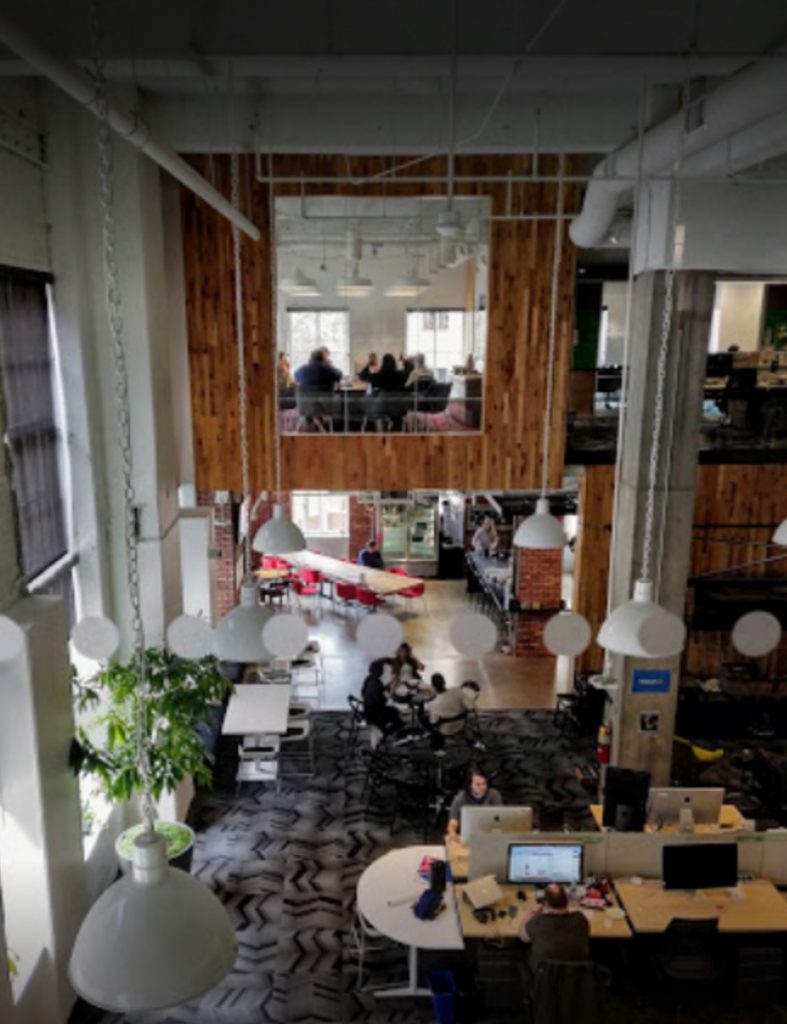
Seattle24x7: In terms of workflow, what types of specialists will Deloitte clients interact with for the development and deployment of a Creative Digital Consulting campaign?
Ogawa: Clients have access to every member of the team. This includes a passionate group of storytellers, strategists, makers, builders, designers, and engineers.
Seattle24x7: Can you give us a few examples of the Creative Digital Consulting program in action?
Ogawa: Definitely. Our work at Transamerica is a great case study.
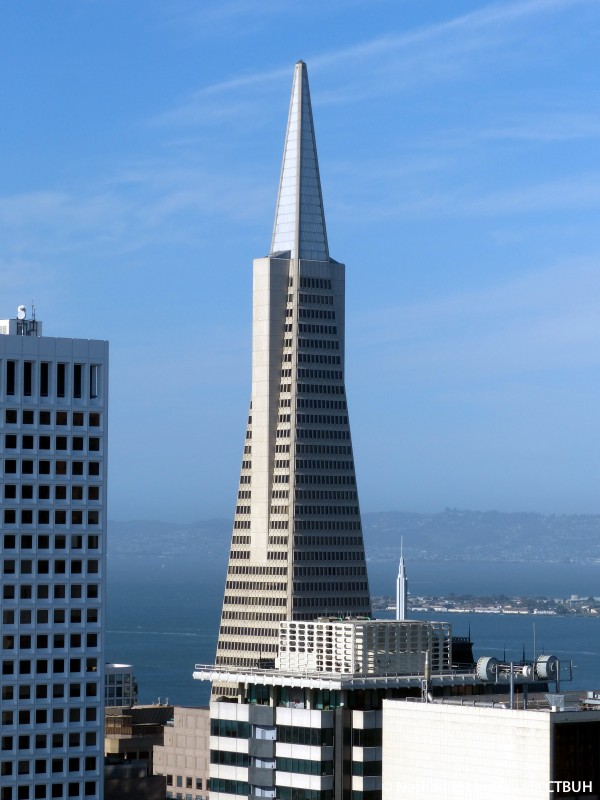
Transamerica lives in the hyper-commoditized, financial services category. Few people recognize the traditional brand beyond its iconic San Francisco building. In need of more than just a re-brand, they needed to transform their business and shift how they engage with customers at every touchpoint.
To do this, the HEAT and Deloitte Digital teams partnered to reposition their brand and their business while leveraging Deloitte’s industry expertise and HEAT’s strategic insights to differentiate Transamerica within a commoditized category.
We identified an inspiring promise for their target consumer, allowing them to champion a cultural conversation around holistic life planning — considering both one’s health and wealth as they look toward the future. This approach was successful in modernizing and activating the brand idea in a culturally relevant way for our target audiences.
Seattle24x7: How did the synergy of creative and strategy take shape?
Ogawa: The combination of HEAT’s surprising creative and Deloitte Digital’s content strategy produced a fresh brand identity, campaign and content strategy framework. At the same time, we were able to develop a digital platform to revitalize the consumer, advisor, and employer experience, by creating a digital knowledge hub of aggregated health and wealth content for consumers.
By combining our forces, we were able to offer a solution to address every facet of the business problem Transamerica was trying to solve —bringing together all the creative and technical capabilities of a creative agency with the business acumen and industry insight of a consultancy to help transform a traditional client’s business with digital.
Seattle24x7: Deloitte uses the term Industry 4.0 to define the current state of the industry. How do you distinguish this fourth-generation from previous generations?
Ogawa: The term Industry 4.0 encompasses the promise of a new industrial revolution. It marries advanced manufacturing techniques with the Internet of Things to create manufacturing systems that are not only interconnected, but communicate, analyze, and use information to drive further intelligent action back in the physical world.

Seattle24x7: You also have defined “Five Components of Structured Innovation.” Can you outline those for us?
Ogawa: Once leaders have established a process to generate and capture new ideas, we believe a company can achieve effective product innovation through five key components. The framework below is based on several engagements with companies looking to reinvent themselves in the face of customer-centric digital transformation and disruption from startups.
1. Clear decision rights: outline clear decision-making at every stage of the innovation process.
2. Empowered innovation hubs: identify and empower the ideal structure within which to achieve innovation goals.
3. Easy-to-follow and outcome-driven processes: outline clear stage-gates and criteria for moving products to the next phase of development.
4. Relevant metrics: select metrics that evaluate the company’s performance across different goals and priorities, which are in turn aligned to larger strategic objectives.
5. Targeted funding: decide how innovation resources should be allocated and managed.
Seattle24x7: Deloitte Digital recommends an “architecture” for accelerating digital transformation. How would you describe this business architecture?
Ogawa: With the prevalence of artificial intelligence (AI), digital, the Internet of Things, process automation, and other technologies, many enterprises are forced to transform their business to avoid the growing threat of market obsolescence. When an organization’s operating model—or how an organization creates value—is aligned to the strategy, it has a far better chance at succeeding. For transformations to succeed, leadership teams may need to revise their organizations’ operating models in order to adapt.
Seattle24x7: How can the business strategy be aligned?
Ogawa: To accelerate digital transformation, Deloitte recommends creating a well-designed and purposefully executed enterprise operating model to help balance growth with risk and overcome organizational barriers.
The operating model should feature a unique set of capabilities aligned to the enterprise’s strategy, with skilled leadership teams, tailored metrics, unique investment profiles, and tight coordination across the value chain.
Most critically, an organization’s operating model must be inextricably linked to the corporate and business-unit strategy and varying business models.
Seattle24x7: How is this implemented?
First, we advise developing a clear sense of strategic ambitions—where to play and how to win—and the business models a company wishes to employ, including target customer segments, channels, pricing, and delivery models, since both the strategy and business model directly influence the operating model design.
Next, identify the holistic set of capabilities required to meet the enterprise’s strategic ambitions. The capability set should include both existing capabilities and new ones (as needed) and address front-, mid-, and back-office functions across all product lines. Determine whether to develop, acquire, partner, or outsource for each capability and allocate work to the most efficient parts of the organization.
Ultimately, the focus should be on driving better outcomes and continuously strengthening operating models by democratizing information across the organization, zeroing in on value-generating activities, and empowering individuals and teams to own change.
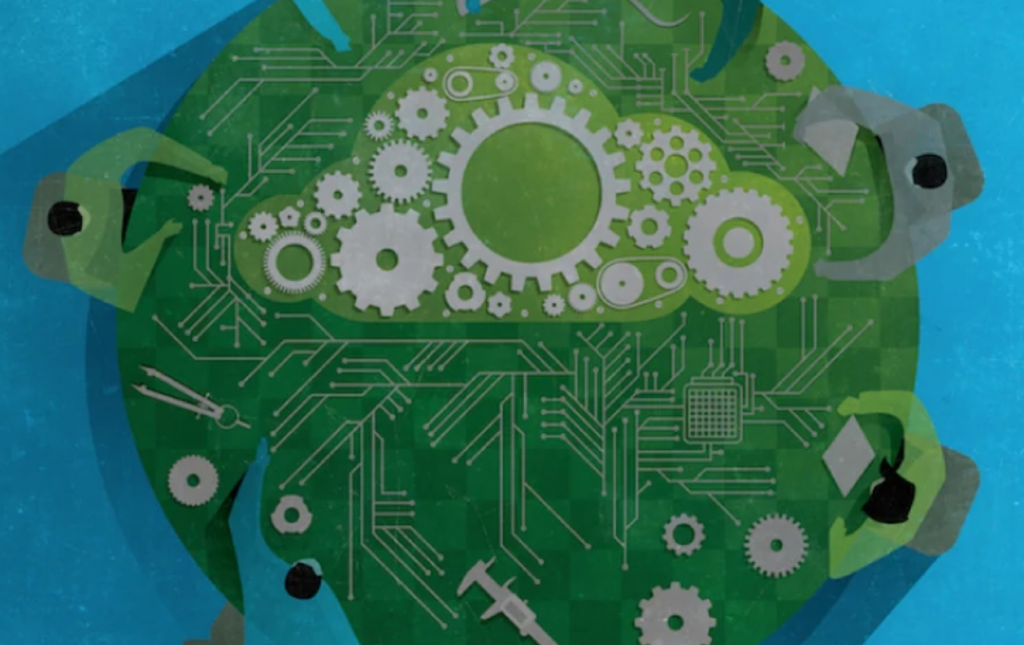
Seattle24x7: Cognitive technologies, like AI, receive a great deal of attention at Deloitte. You cite that an intelligent interface trend represents an opportunity to use converging exponential technologies to understand customers more deeply, enhance operational efficiency, and create highly personalized products and services. How can companies show a return on this kind of investment sooner than later?
Ogawa: In today’s interfaces marketplace, there is a gap between what these emerging technologies truly do and how their costs are justified. As companies explore opportunities with AI, we recommend they think critically about what they want to achieve, how these technologies may help them achieve it, and about the level of commitment they are willing to make.
Seattle24x7: Deloitte has announced a Deloitte Reimagine Web App. Do I understand correctly that this is an extension of one of your partner’s technology platforms?
Ogawa: The Deloitte Reimagine Platform features a portfolio of offerings built around the SAP Leonardo digital innovation system. The app provides different modes for discussion and review. these include understanding of the use case objectives, education on how a use case can help your business, and previews of architecture requirements. The app also incorporates marketing content and videos and, of course, the ability to connect directly with Deloitte experts. [24×7]
For more information, visit the Deloitte Digital Website at http://www.deloittedigital.com/












